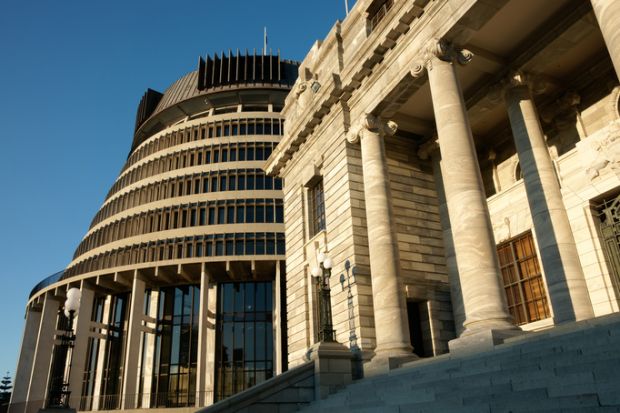Tuition subsidies for New Zealand’s cash-starved universities and polytechnics will rise by 1.6 per cent next year after lower than expected enrolments left some extra money in the kitty.
Education minister Chris Hipkins said that about NZ$37 million (£19 million), previously earmarked to help pay for the country’s controversial free tuition policy, would be “reprioritised” to tertiary institutions.
Mr Hipkins said that the extra funding was a first step. “While work associated with fees-free tertiary education continues, it is important that providers are able to maintain the quality of what they deliver,” he said.
New Zealand universities were left reeling after last month’s budget included almost no extra allocation for tertiary education, with any largesse consumed by the estimated NZ$2.4 billion cost of phasing out fees.
Under hurriedly implemented arrangements, students who had completed less than six months of post-school education were not required to pay for the first year of tertiary courses, with the fee-free stretch scheduled to rise to three years by 2024.
Mr Hipkins said that the government had overestimated the number of students eligible for free education and training this year by close to 50 per cent. He said that the Ministry of Education had calculated that up to 80,000 people would qualify, but the actual maximum was 54,000 – with just 33,000 so far taking advantage of the new arrangements.
He said that this was “very encouraging” because it appeared that a seven-year slide in tertiary enrolments – including a fall of about 5,000 last year – had now stopped.
Shadow education minister Paula Bennett said that the policy had been a “resounding failure” and “arguably the biggest waste of taxpayers’ money in the last few decades”.
“This government did no cost-benefit analysis of the policy; nor did it listen to experts. That’s come back to bite it with Tertiary Education Commission figures showing there has been almost no increase in university enrolments and a 3.2 per cent drop in enrolments at polytechnics and institutes of technology,” she said.
Ms Bennett said that there had been no increase in student numbers from the groups the policy had particularly targeted, such as Maori, Pacific islanders and people from low socio-economic backgrounds.
“There was never any evidence that cost was a significant barrier to entry for most students,” Ms Bennett said. “The government is simply subsidising higher education for kids from wealthy families who would have gone to university anyway.”
Representative body Universities New Zealand said that while the increased subsidy levels would help, there was “still a long way to go”.
“Continued underfunding makes it harder for NZ’s universities to maintain their international rankings,” said executive director Chris Whelan. “Universities will struggle to provide young New Zealanders access to a world-class university education.”
Mr Hipkins said that he would consult soon on the degree to which universities would be allowed to raise their fees next year. He said that plunging enrolments and a decline in the real value of tuition subsidies had challenged providers’ ability to maintain quality.
The New Zealand government has kept fees tightly constrained in recent years, partly because students’ interest-free debts are not indexed to compensate for inflation. Consequently, government officials are wary of allowing the amount loaned to rise.
Mr Hipkins said that the lukewarm tertiary enrolments partially reflected the strength of the labour market. He blamed his ministry’s overestimate on a lack of up-to-date data, and said that costings had been “set deliberately at the upper limit to ensure sufficient funding”.
Register to continue
Why register?
- Registration is free and only takes a moment
- Once registered, you can read 3 articles a month
- Sign up for our newsletter
Subscribe
Or subscribe for unlimited access to:
- Unlimited access to news, views, insights & reviews
- Digital editions
- Digital access to THE’s university and college rankings analysis
Already registered or a current subscriber? Login








